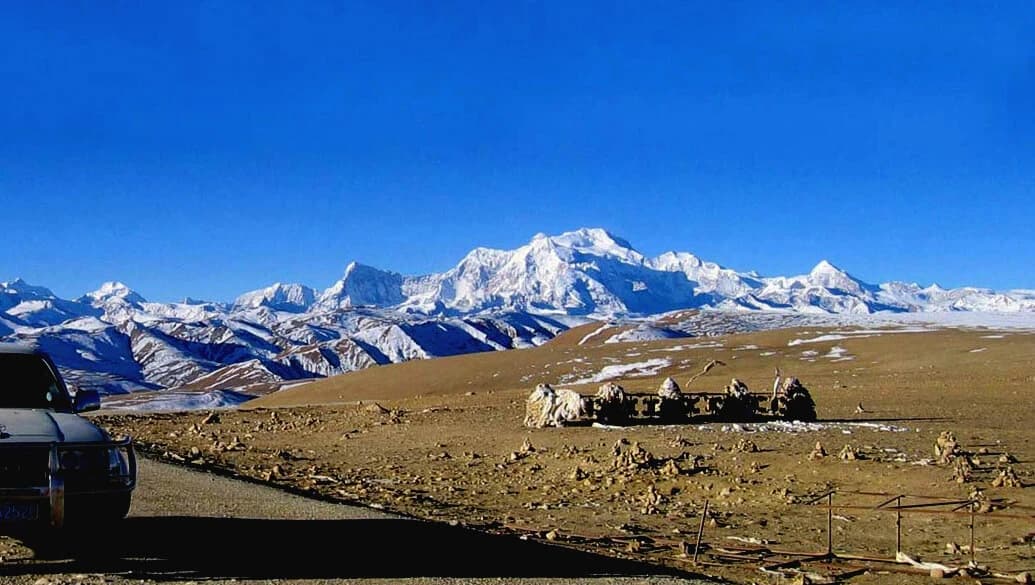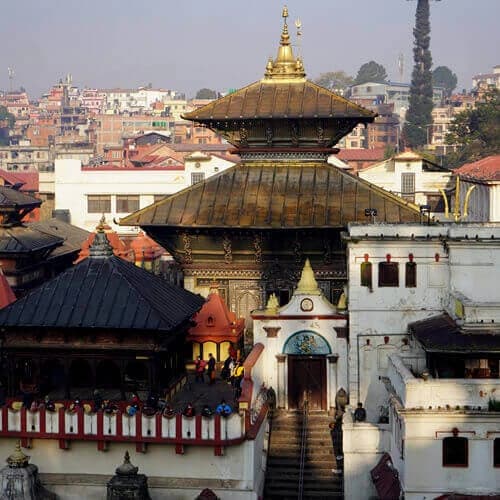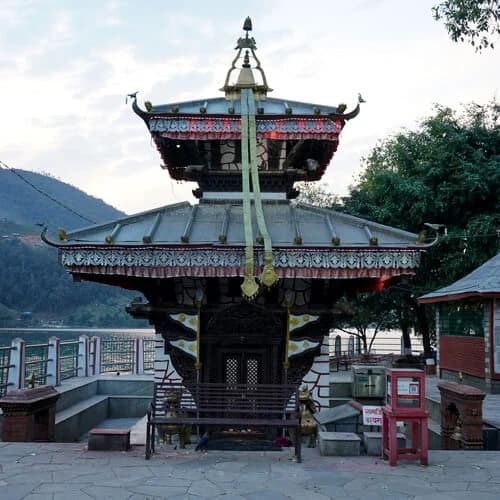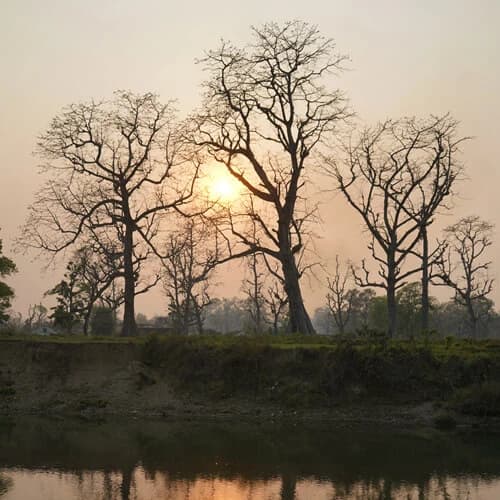Did you know you can enter Tibet from Nepal? Yes, you heard that right! It may come as a surprise for some of you, but you can actually travel to Tibet from Nepal, that too by road. Isn't that amazing? Now you can add a road trip to Tibet (once a forbidden land) while visiting Nepal and explore the glorious Himalayas from both north and south. The Lhasa Tibet Tour Drive In and Fly Out is one such road trip that begins in Kathmandu (the capital of Nepal) and takes you to Lhasa (the capital of Tibet), stopping over the beautiful Gyirong, Tingri, Shigatse, and Gyantse.
For mountain enthusiasts, the Lhasa Tibet Tour Drive In and Fly Out is the best-ever road trip over the highlands of the Tibetan Plateau, driving in an incredible desert-like mountainous landscape. Not only for mountain lovers, this trip is equally relished by Buddhist pilgrimage and travelers with a deep interest in Tibetan culture and Buddhism. During this tour, you'll visit the substantial cultural heritages of Tibet, like temples, monasteries, a palace, and beautiful Himalayan lakes.
The Kathmandu to Lhasa Overland Tour is an incredible cross-country tour with a mosaic of Tibetan Buddhist cultural heritage and eye-catching natural Himalayan panoramas. Kathmandu – Tibet overland tour is mostly arranged in fixed group departure, and it is departed every week from Kathmandu. However, private departures can be arranged on any day of the year.
Travelers of all age groups can easily take this tour as it does not require extreme physical strength like in adventures such as hiking or trekking. You'll be driven to all major tourist places in a private vehicle. Thus this 8 Days Kathmandu Lhasa Tibet Overland Tour organized by Outfitter Nepal is perfect for friends' trips or family vacations, even with children and senior citizens.
We understand 8 days aren't enough to explore the entire Tibet, but we guarantee that these 8 days on the Tibetan roads will be the most unique and memorable road trip experience of your lifetime. While we can't see it all, we won't miss any significant sites along the way. Our experts at Outfitter Nepal have planned this itinerary to give you the most out of your Tibet trip in this short duration. Join us in our Kathmandu Lhasa Overland Tour for an incredible journey to the "Roof of the World."
Best Features of the Lhasa Tibet Tour Drive In and Fly Out
- Enjoy a scenic drive via ever-changing scenery from Kathmandu to the Tibetan highlands
- Entering Tibet via the Nepal-Tibet Friendship Border of Gyirong
- Worshiping a 26-meter-tall gold Buddha at Tashilumpo Monastery, a walled structure the size of a hamlet
- Admiring Yamdrok Tso's turquoise waters, one of Tibet's most revered lakes
- Exploring the historic Lhasa for 2 whole days
- Circling the shrines of the Jokhang Temple, the center of Tibetan spirituality
- Enter the Potala Palace's underground levels to explore the majestic yet lifeless Dalai Lama bastion
- Witnessing prayers at Sera Monastery, one of the biggest and most well-preserved of Tibet's ancient monasteries
- Wander along Barkhor Street, a remarkable medieval pilgrim route in Lhasa
What to expect from the Tibet Lhasa Overland Tour?
The Kathmandu - Lhasa Overland Tour, beginning and ending in Kathmandu, starts with an early morning drive from Kathmandu to Gyirong Border. After the immigration formalities, you pass the Nepal-Tibet border and stay first overnight at the border in Tibet side. The Nepal Tibet overland tour continues to Lhasa with an overnight stay at Tingri, Shigatse & Gyantse. You explore high-road journeys with Tibetan mountain scenery visiting many Buddhist monasteries along the way.
The 8 Days Kathmandu Lhasa overland tour comprises 2 full-day tours in Lhasa. Lhasa has many historical, cultural, and religious sites to visit, including Potala Palace, Jokhang Temple, Barkhor Market, and many more. You have a tour of these major places and other highlights of Lhasa. You then take a return flight to Kathmandu from Lhasa airport to conclude the tour. However, if you plan to travel to other parts of China, then you can end the tour in Lhasa and travel to other parts of China from Lhasa.
Major Attractions of the Lhasa Tibet Tour Drive In and Fly Out
Potala Palace
Potala Palace is a historic palace that sits on top of Marpo Ri (Red Hill) in central Lhasa. It used to be Dalai Lamas' winter palace from 1649 to 1949 and is now turned into a museum and administrative building complex. This huge complex contains buildings with thirteen stories, more than 1000 rooms, 10,000 shrines, and 200,000 statues. It is one of the most popular spiritual sites in the world and was listed as UNESCO World Heritage Site in 1994. The palace is visible from a great distance in the Lhasa Valley, with its golden roof gleaming in the sunlight.
Jokhang Temple
Situated in Barkhor Square in Lhasa, Jokhang Temple is considered the most sacred Buddhist Temple in Tibet and is known as the "spiritual heart of the city." The temple's architecture combines elements of Tibetan, Nepalese, and Indian Vihara styles. The Jokhang was established under the Tibetan Empire's rule by King Songtsen Gampo. The temple was supposedly constructed for the king's two wives, Princesses Wencheng of the Chinese Tang dynasty and Princess Bhrikuti of Nepal. Both are claimed to have brought significant Buddhist statues and images to Tibet as part of their dowries, which were kept here.
Barkhor Street in Old Lhasa
Barkhor Street, present-day Pargor Subdristict, is a region of congested streets and an open space surrounding the Jokhang Temple. This famous tourist site is also a spiritual circumambulation for local residents. A kilometer-long path circles the entire Jokhang Temple, the Muru Nyingba Monastery, as well as several historic royal residences, including Tromzikhang and Jamkhang. Four sizable incense burners (sangkangs) were built in each of the four cardinal directions to appease the deities guarding the Jokhang. Barkhor's Tromzikhang market is always bustling with tourists and locals alike.
Sera Monastery
Located 2 km north of Lhasa and roughly 5 km north of the Jokhang, Sera Monastery is one of Tibet's "great three" Gelug University monasteries. Drepung Monastery and Ganden Monastery make up the remaining two. The monastery's name is thought to have originated from the fact that the hill behind the monastery was covered in flowering wild roses (or "sera" in Tibetan) while it was being built.
Jamchen Chojey, a student of Je Tsongkhapa, established the Sera Monastery in 1419 as a complex of buildings that included the Great Assembly Hall and three colleges. 19 hermitages, including 4 nunneries, were part of the old Sera Monastery. The monastery sustained significant damage during the 1959 Lhasa uprising, with its colleges being demolished and hundreds of monks being slain.
Dadong Village
Popular as the most beautiful village in Lhasa, Dadong Village is located about 20 km away from the city center in the southwest part of Lhasa. The deep valleys, ancient trails, trickling springs, and verdant foliage make this historic Tibetan hamlet one of the best maintained in the country. The historic Nyimatang Monastery, the mysterious Pharmacist Hall, and the old warehouse of the 6th Dalai Lama, Tsangyang Gyatso, attract travelers to this village. Furthermore, one can enjoy the sight of a clear blue sky dotted with white clouds, beautiful green farm fields, and sheep grazing in the grassland.
Yamdrok Tso (Lake Yamdrok)
Lake Yamdrok is a stunning freshwater lake situated halfway between Gyantse and the Tibetan capital of Lhasa. Elevated at a height of 4,441 meters above sea level, the lake is 130 kilometers long and 70 kilometers wide at its furthest point. With a maximum depth of 60 meters and an average depth of 20 to 40 meters, Yamdrok is the largest freshwater inland lake in the northern Himalayas. Several tiny streams feed into the lake, which is surrounded by various snow-covered mountains. Along with Lake Manasarovar, Lake Namtso, and Lake Lhamo Latso, Yamdrok Lake is one of Tibet's four largest sacred lakes, believed to be the inhabitants' lifeline.
Tashi Lhunpo Monastery
Tashi Lhunpo Monastery was established by the 1st Dalai Lama on a hilltop at the center of Shigatse, the second-largest city in Tibet, in 1447. This historically and culturally significant monastery was the traditional monastic seat of the Panchen Lama, the second-ranking tulku lineage in Tibetan Buddhism's Gelug tradition. The monastery's full name in Tibetan translates to "all fortune and happiness gathered here" or "heap of glory."
Pelkor Monastery
Pelkor Chode Monastery, also known as the Palcho Monastery or the Shekar Gyantse, is the major monastery in the valley of the Nyangchu River in Gyantse County and is situated in Gyantse Town. The monastery is especially exceptional in Tibet because it is home to the Sakya, Gelug, and Kadam schools of Tibetan Buddhism. The sanctuary is one of the highest-status monasteries in Tibet and features elements of Tibetan, Chinese Han, and Nepalese architecture.
The Kumbum Stupa, which is one of its kind in Tibet, is the centerpiece of the monastery's expansive complex of monastic buildings. The stupa, or chorten as the Tibetans refer to it, sits inside the monastery walls and is the highest stupa in Tibet, with a 32 m/105 ft tall structure. It has 108 cells with different statues and wall murals. You may get a great view of the monastery, adjacent fort (Dzong), and Gyantse town from the top levels of the Kumbum Stupa.




